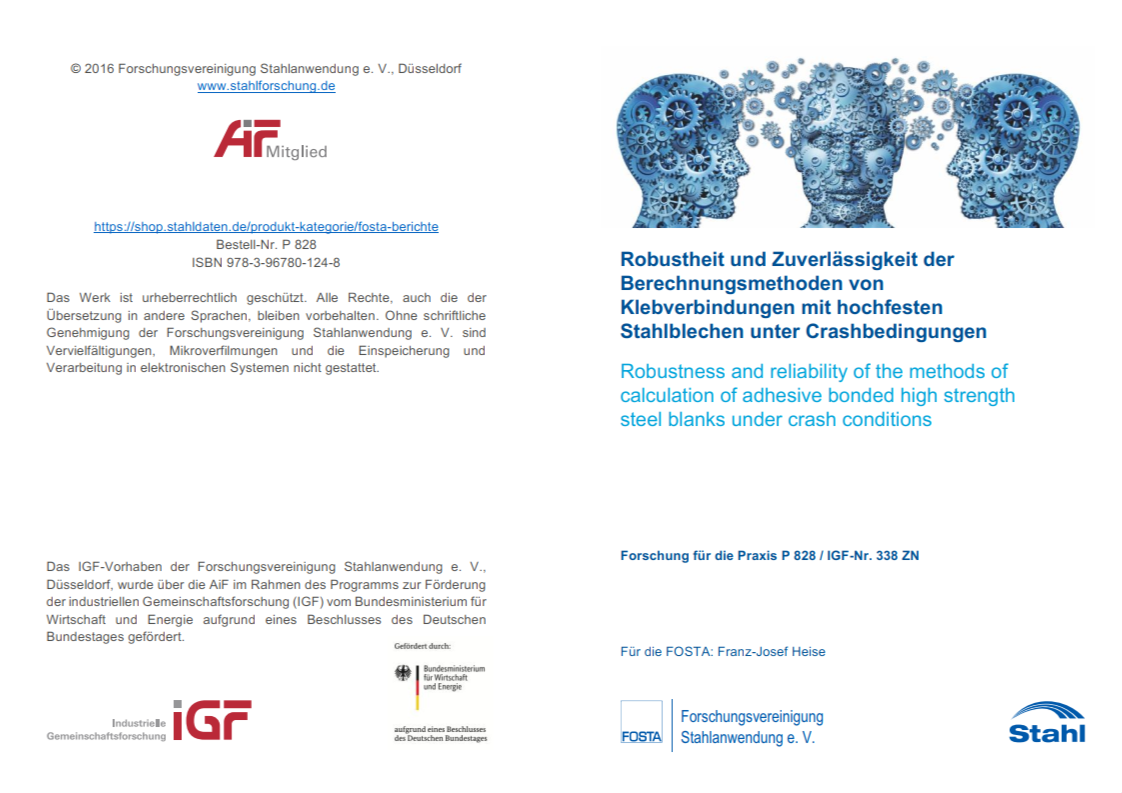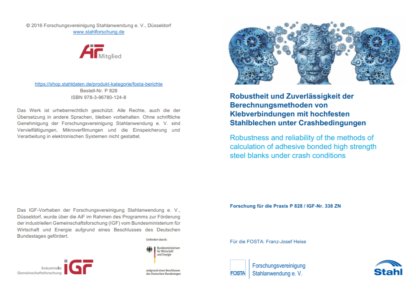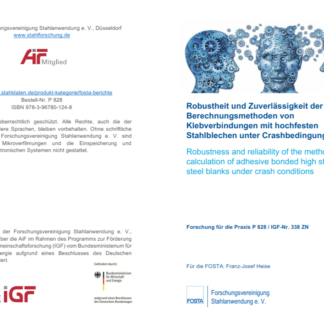Description
P 828 – Robustness and reliability of the methods of calculation of adhesive bonded high strength steel blanks under crash conditions
The preceding project (P676) ended in spring 2007. The results obtained were used as a basis for crash simulations in the automotive industry. Five different models for describing adhesives or adhesive layers originated from the project. A final selection of a preferable model was not yet possible. Other unanswered questions concerned the robustness and reliability of the model predictions.
This was the starting point of the current project. Concerning modelling, the work focussed on two different approaches and their further development. New experiments increased the investigated range of load cases and test velocities hile improving the measurement techniques. Uncertainty of measurements and catter of results were analyzed. These information were used in the parameter identification in order to calculate the reliability and sensitivity of model parameters. The efect of the parameter uncertainty was investigated in the simulation of validation experiments. Altogether, the investigations highlighted the degree of accuracy of the models developed and of methods of parameter identification. Furthermore, the analyses gave indications towards key experiments in which a reduction of scatter would result in an increase of accuracy of model predictions. Additionally, the analyses showed if the experimental data suggested model simplifications.
At least as important as the scatter of the parameter identification experiments was their selection, for example the use of either thick adherend lap shear test or compressive double lap shear test for the characterisation of shear behaviour.
Several validation tests were simulated with different sets of model parameters. The result allowed to identify the parameter identification experiments which esulted in the best agreement with the experiments. However, no final explanation was found why not all tests could be simulated well with a single parameter set. Therefore, the difference in predictions of the different parameter sets has to be considered as an uncertainty of crash simulation of bonded structures as of today. In general, simulations and tests showed a good agreement with average deviations about 20 %.
Published in:
2016
Authors:
Dr. M Brede, Dr.-Ing. O. Hesebeck, Dr.-Ing. St. Marzi, Dipl.-Math. Techn. N. Nörenberg, Dr. M. May, Dipl.-Ing. S. Kilchert, M.Sc. H. Voß, Prof. Dr.-Ing. A. Matzenmiller, Dr.-Ing. F. Burbulla, Dr. D. Memhard, Dr. W. Böhme, M.Sc. J. Lienhard, Dipl.-Ing. (FH) C. Fehrenbach




